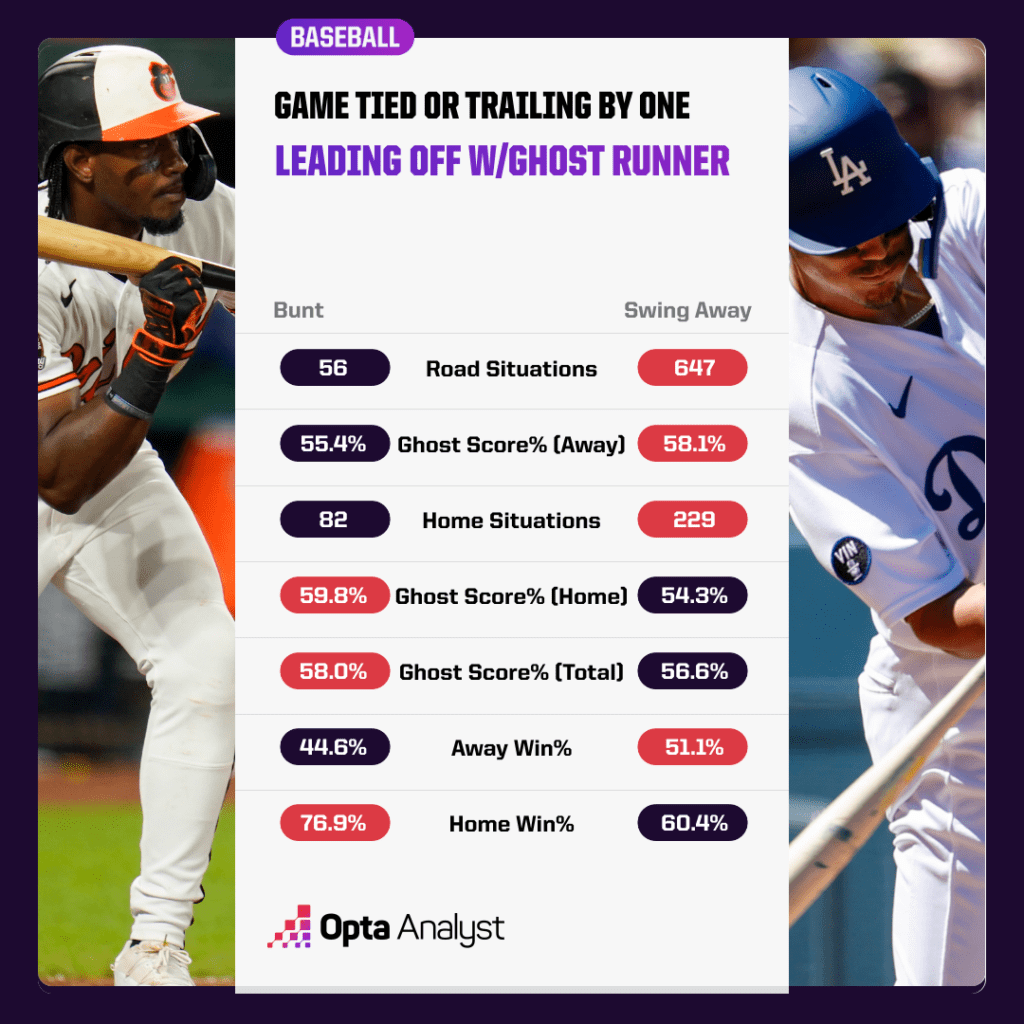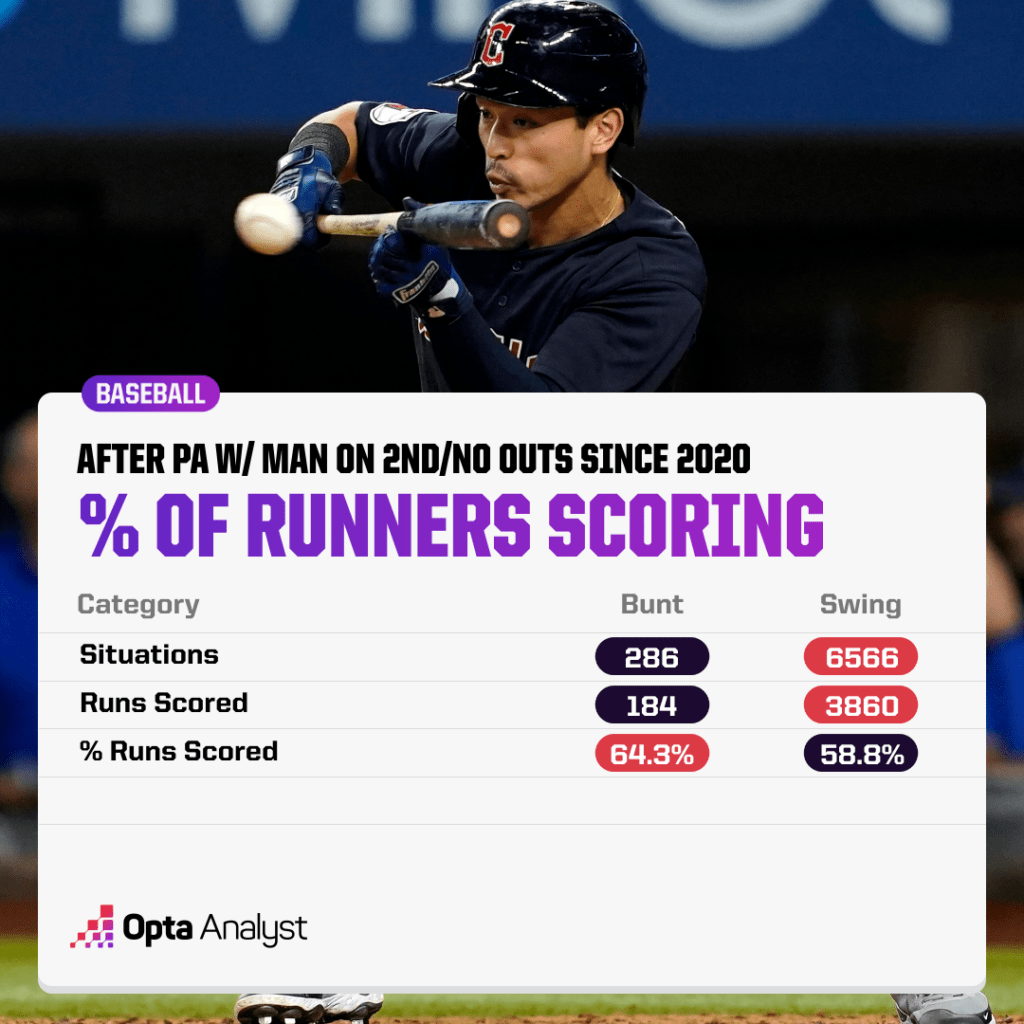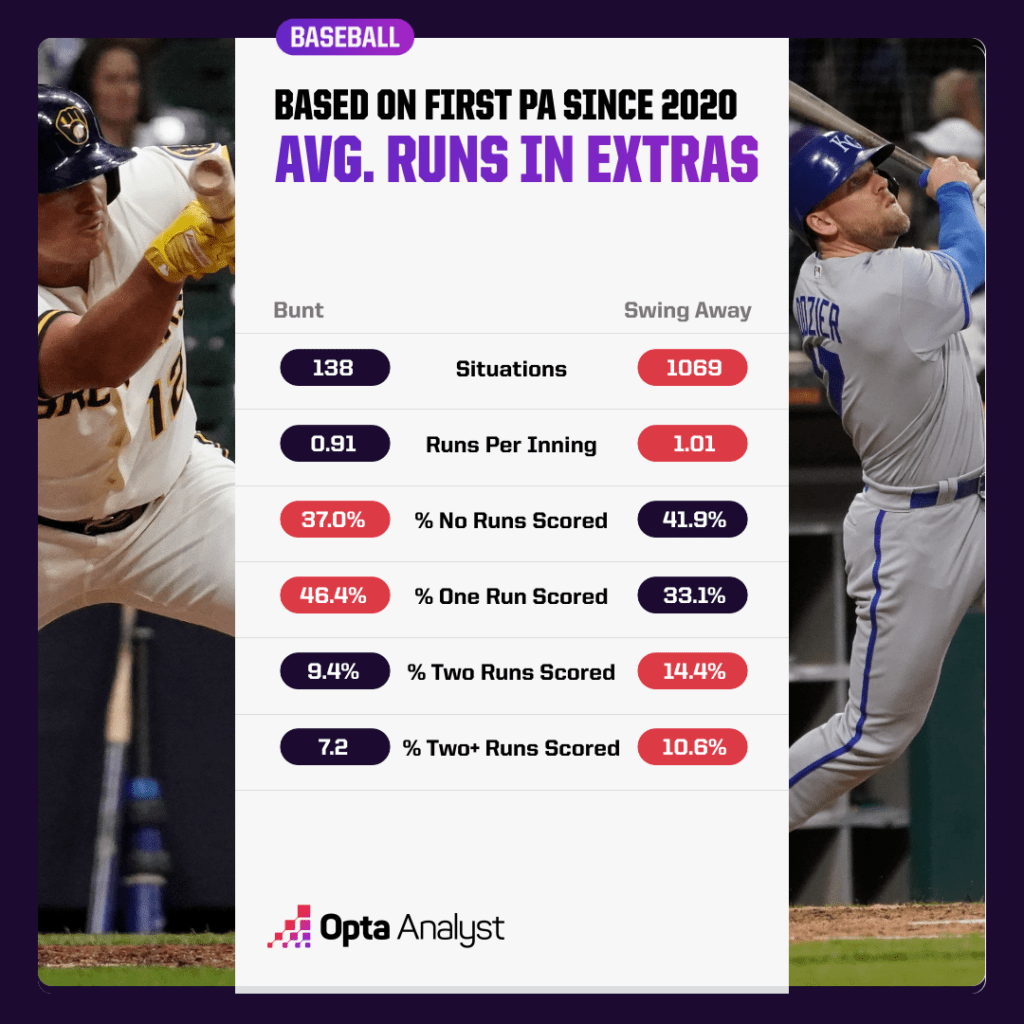Major League Baseball debates between old-school strategists and modern analytical thinkers aren’t going away any time soon.
And the implementation of the ghost runner in 2020 reawakened one of them.
There was a time when a team’s ability to manufacture runs was considered to be closely aligned with its success. And in a tie game in extra innings with a runner on second and nobody out, traditionalists no doubt want to bunt the runner to third and take a couple of shots at getting him in from 90 feet away.
On the other side, the number of clubs that embrace analytics (all of them to various degrees now) certainly don’t want to give away an out – even in the situation outlined above.
Bill James, considered to be the godfather of analytics, explained in a 2011 NPR interview that “bunting is usually a waste of time. If you think about it, a bunt is the only play in baseball that both sides applaud. So what does that tell you? Nobody’s really winning here.
“And hitting in (the) clutch is unpredictable and unreliable,” he added. “The way you really score more runs is by getting more people on base.”
While portraying Oakland A’s general manager Billy Beane in the movie version of Moneyball, Brad Pitt explained this line of thinking further: “If someone bunts on us, just pick it up and throw it to first. They’re giving you an out – just giving it to you. Take it. Say thank you.”
So it makes sense that since the ghost runner or Manfred man rule was added in 2020 as part of the league’s efforts to shorten the length of games – both in terms of time and innings played – that the leadoff batter has swung away 88.6% of the time in extra innings.
But does that mean clubs have been making the right move? The data reveals that it’s widely dependent on the circumstances.
Let’s look at extra-inning situations in which the result of the first plate appearance came with no outs, a runner on second base and the batting team tied or trailing by one. Situations in which the runner on second advanced or was called out prior to the end of the plate appearance were not included.
In these spots, the road team has elected to swing away 92.0% of the time since 2020 with a 51.1 win percentage and the ghost runner scoring at a 58.1% rate compared to a win percentage of 44.6 and the Manfred man scoring at a 55.4% rate when the club has tried to play for one run with a bunt attempt.
The home team has had fewer opportunities in these situations since we’re only looking at times when the batting team is either tied or trailing by one. It also seems logical that the hosts swing away less often (82.3%) because they’re more likely to bunt with the game tied and try to manufacture the winning run.
And when home teams have attempted to bunt with the game tied or trailing by one, the ghost runner has eventually scored 59.8% of the time compared to 54.3% when they’ve decided to swing away. The hosts have a 76.9 win percentage when attempting to lay one down and just a 60.4 win percentage when swinging away.
Keep in mind that everything doesn’t add up exactly on home/away win percentages because our study is only looking at these specific game situations (tied or trailing by one) to begin the inning. Hence, it would exclude any occasions when the visiting team scored more than one run in the top of the inning – that’s why the home winning percentages are so high.
Plus, the instances of a team both bunting and swinging away to open different extra innings in the same game would cause games to be double-counted in some instances but not others.
So according to the data, clubs should be swinging away if they’re on the road but bunting if they’re tied or trailing by a run on their home field.

How does that approach compare to similar situations in innings one through nine when the game is not in extra innings (there were seven-inning double-headers in part of 2020 and all of 2021)?
With no outs and a runner on second base in regulation time, teams have opted to swing away instead of bunting the man over to third an eye-opening 95.8% of the time. Again, situations in which the runner on second advanced or was called out prior to the end of the plate appearance aren’t counted here.
The percentage of runners who have scored from second after a plate appearance with nobody out in innings one through nine is 64.3% when the team attempts to bunt and 58.8% when teams have chosen to cut it loose.

That might lead fans to think that bunting is the better strategy. And it may be if a team wants to play for one run because the game situation dictates it or if the team believes it only needs a couple of runs to win because it has a dominant pitching staff.
Of course, sacrifice bunting has experienced a dramatic fall in MLB as a result of the analytics movement, plummeting from 1,667 in 2011 to an all-time low of 390 last season. If teams are rarely bunting in games (and likely rarely bunting in workouts), how many players can confidently get one down in a key situation anymore? It’s certainly something to consider.
There’s another reason why teams choose to swing the bat on the first plate appearance with no outs and the ghost runner on second the majority of the time. And it has to do with the average runs scored in extra innings.
While teams that choose to bunt have scored one run in the inning 46.4% of the time since 2020 compared to 33.1% of the clubs that don’t, teams that swing away have been more likely to have a big inning than those that have opted to square around.
They’ve pushed across two runs 14.4% of the time versus 9.4% for the bunting teams and the percentage of occasions they’ve scored more than two has been 10.6 compared to 7.2.

It’s worth noting that the higher total average runs from the “swing away” innings could be partly due to the fact that there were 900 more innings in that group. That makes it more likely to contain the extreme scenarios in which teams poured it on and brought up the total average.
Also, many of the runs in the innings in which teams scored big came long after the first plate appearance and aren’t necessarily impacted by whether the first hitter had decided to swing away or attempt a bunt.
Still, the average is capped somewhat for home teams because the game ends once they score more runs than their opponents and it’s not far-fetched to think there’s more of an opportunity for a big inning when you’re not giving up an out to open the frame.
Regardless, with two-plus years’ worth of data since the ghost runner was implemented in 2020, we now have enough information to get a feel for what has worked, what hasn’t and why teams are making the decision they are in extra innings.
Research support provided by Stats Perform’s Jesse Abrahams and Sam Hovland.
